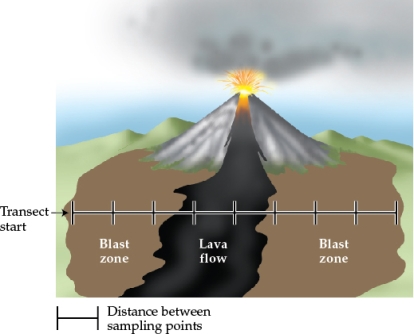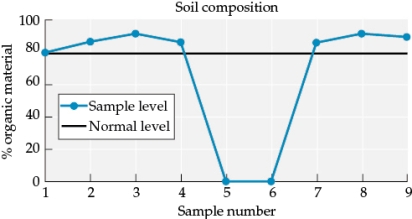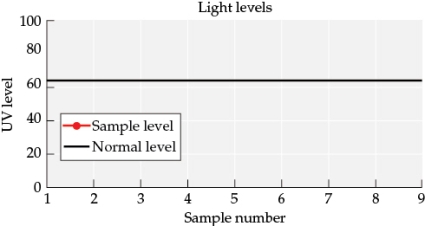Refer to the figures.
Figure 5
 Figure 6
Figure 6
 Figure 7
Figure 7
 You are studying the impacts of a volcanic eruption that produces a lava flow that covers part of a grassland (Figure 5). You begin taking samples as soon as the area is safe to work in-about one year after the main eruption has ended. You set up a transect (beginning at "Transect start" in Figure 5), and then collect data on how several abiotic and biotic factors vary across it (Figures 6 and 7).
You are studying the impacts of a volcanic eruption that produces a lava flow that covers part of a grassland (Figure 5). You begin taking samples as soon as the area is safe to work in-about one year after the main eruption has ended. You set up a transect (beginning at "Transect start" in Figure 5), and then collect data on how several abiotic and biotic factors vary across it (Figures 6 and 7).
-Answer the following questions:
a) According to the data in Figure 6, what was the effect of the eruption on the percent of organic material in the soil along the transect?
b) Based on Figure 5, predict how the eruption would have changed the amount of UV reaching ground level along the transect. Graph your prediction (this will be referred to as Figure 8).
c) Based on the available resources, what type of succession would you expect along the transect? In both the blast zone and lava flow areas, how extreme are the conditions faced by the colonizer species? How would you expect the extent of extreme conditions to limit the species that could potentially colonize the areas?
Definitions:
Maternal Mortality Rate
A measure of the number of deaths of women due to pregnancy-related causes per 100,000 live births in a given year or place.
Live Births
The delivery of a baby who shows any sign of life, such as breathing or heartbeat, after separation from the mother's body.
Dilation
The process of widening or expanding an organ or opening in the body, often related to the eyes or blood vessels in response to various conditions.
Cervix
The lower, narrow part of the uterus that opens into the vagina, playing a key role in female reproductive health and childbirth.
Q7: Which statement about succession in the glaciers
Q11: Refer to the figure.<br><img src="https://d2lvgg3v3hfg70.cloudfront.net/TBO1115/.jpg" alt="Refer to
Q18: You are studying two new species that
Q22: Which biogeographic region lies directly north of
Q27: Which statement about adaptive management is true?<br>A)
Q33: During the 1950s and 1960s, the cattle
Q40: Which statement best describes the relationship between
Q41: Which of the following is not an
Q56: Which group shows greater species richness in
Q63: Which present-day continent was not part of